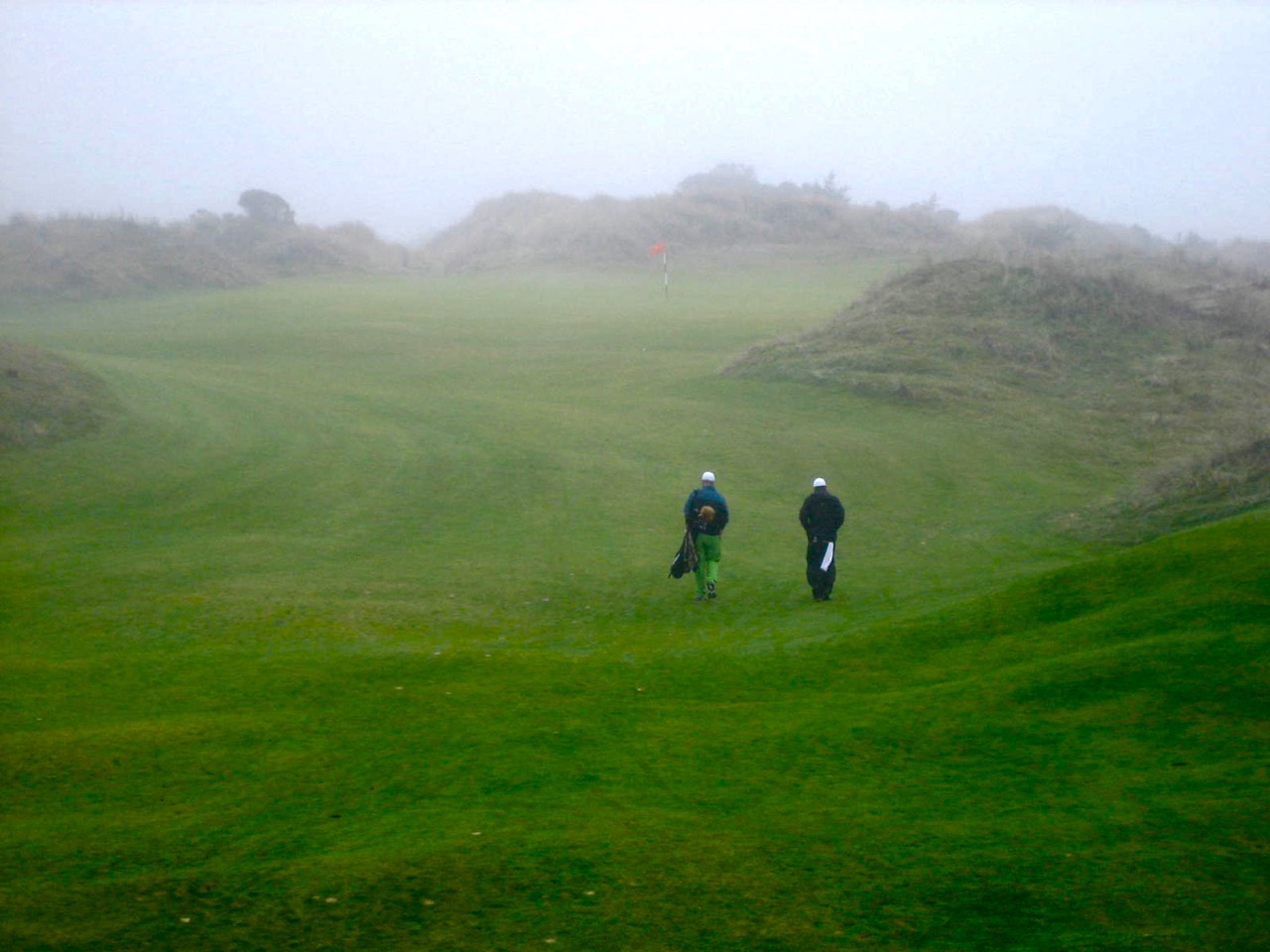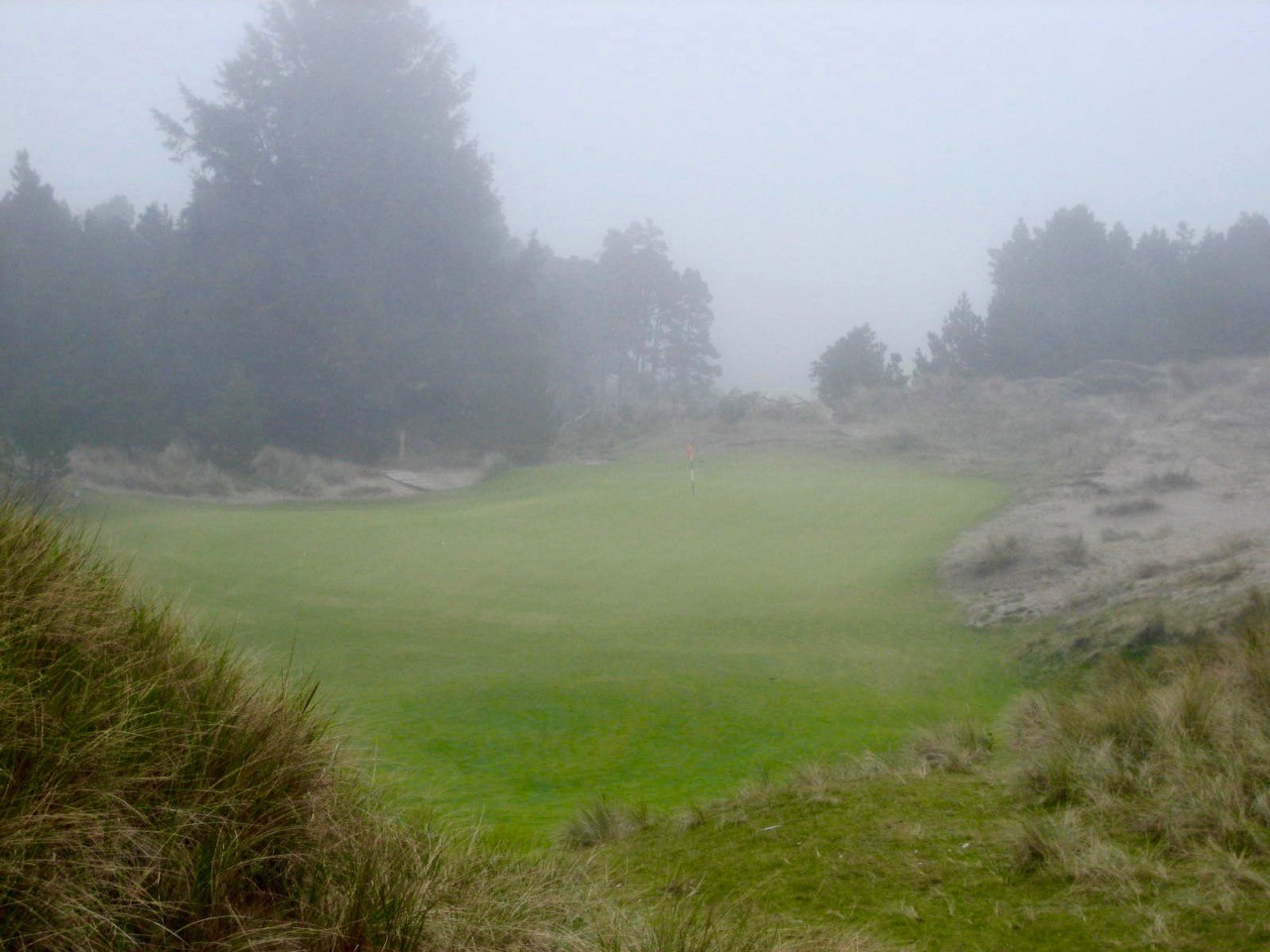The Faces of Bandon Trails

The book on Bandon Trails has always read something like this: developer Mike Kaiser wanted Bill Coore and Ben Crenshaw to build the third course at Bandon Dunes Golf Resort, but after the original Bandon Dunes course and then Pacific Dunes grabbed all the most prestigious property, all he could offer them was a piece of land set back from the coast with no opportunity for the dramatic oceanfront holes that helped make the destination famous.
Overcoming the deficit of ocean holes, Coore and Crenshaw, as they’re proficiently wont to do, decoded the secrets of the land by locating holes across diverse inland ecosystems, foraging a Bandon Trails course that takes players on a fantastic voyage through dunes, meadow, upland rain forest and back.

This storyline assumes two things. One, that land without Pacific cliffs was inherently a cut below land with them; and two, that working holes through three distinct landscapes achieves a unique type of virtuosity.
Neither are necessarily true.
The Bandon Trails site is transcendent by any standards, with large-scale dunes features, sandy soils, luscious topographical movement and ancient conifer treecover. One might even argue the different environments increase the likelihood of quality golf since the architects need only winnow maybe 4 to 6 great holes out of each distinct pocket rather than 18 from a more singular setting. The more ingredients, the more adventurous the dish.

To the second point, the Trails will always stand slightly askew because it lacks the cohesion of the resort’s other three courses, which have more or less consistent landscapes. Bandon Dunes (welcoming, open, gorse, cliffs), Pacific Dunes (intimate, high dunes, severe greens, cliffs) and Old Macdonald (unlimited, epic, Macdonald/Raynor DNA) are each meditations on a theme. They offer rhythm, hooks and terroir — you settle into a groove and stay there.
The Trails is built around an evolving structure. A high, slender ridge separates the lower meadow and dunes from the upland forest, and if there’s a sluggish scene in this multi-act play it’s the holes dotted among the towering evergreens where the land movement lacks the energy of the the lower regions.

The woodland holes offer some of the widest fairways and largest greens, but with the exception of the short downhill par-4 8th playing them can feel more like batting fungoes in a ballpark than an execution of golf shots.
Consequence returns with the downhill approach to the par-4 13th green set at the foot of the ridge, where a miss wide right will send a ball into thicketed ravine. Crossing back over the top of the cliff, the controversial drop-shot par-4 14th can send players into Groundhog Day as they pitch their ball back and forth over the slender raised green. From there the course returns to the lowlands and the more nuanced ground features.

These middle holes bridging the open dunes and the ridge — the 4th, 5th, 6th, 15th and 16th — comprise one of the resort’s most evocative microclimates. Greens are situated in natural bowls and on shelves. Spines, dune ridges and foothill slopes create lines-of-play strategy and move the ball along the ground in not always intended directions. And the native grasses, washes, scrub and scattered stands of conifers combine for a type of golf atmosphere specific only to the Trails.
I’ve met many who think Trails is the resort’s best course, and almost none who don’t like it. But often what these players most enjoy is the diversion through trees, which is ironic because tree-lined holes (albeit not always this romantic) can be found in countless places elsewhere, whereas Bandon’s undulation, gorse, dunes, links turf and sand soils are a rarity.
Whether or not you miss playing along the ocean or judge the Trails in the context of its brethren, it’s hard to envision a better course on this site. Interestingly, there may be only one other Top 100-caliber course aside from Spyglass Hill that switches so smoothly between such divergent landforms, and that’s Friars Head on Long Island, designed just three years earlier by…Coore and Crenshaw (95).
Bandon OR
Architects: Bill Coore and Ben Crenshaw
Year: 2005

One Reply to “The Faces of Bandon Trails”